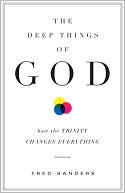The subject of church and culture is one that I have been studying for some time. Of course, this is subject that is on the front burner of contemporary American Christianity, and in one form or another has always been front and center. Think of how significant and comprehensive are the questions regarding this issue. How involved should the Church be in politics? What is Christian art? Should Christian art even be obviously “Christian”? How far should Christians venture into “worldly” movies, music, and entertainment? What exactly is “worldliness”? What meaning is there in “secular” employment? How does the Church be “in the world” without becoming “of the world”? How does the Church proclaim a counter-cultural (by the way, what does “counter-cultural” mean?) gospel without becoming irrelevant to the culture (and what does “irrelevant” mean and should we care?). Enter John Barber’s The Road from Eden, which is an attempt at a comprehensive history of how the church has interacted with culture. As I slowly work through this book, I thought I would share some perspectives on church and culture from various points in Christian history.
Up first is a piece of early Christian art, the painting titled Raising of Lazarus. In the picture Christ is portrayed as a “large, senatorial, Apollo-type figure.” The Roman senate was the most distinguished and powerful class in the Roman Empire. Apollo was the god of power, and one the three most significant gods in the Roman mind. So why would a Christian artist fashion Jesus after a pagan god?
At first, this painting appears to be simple syncretism, a thoughtless absorption of pagan culture into Christianity. Christianity, even at this early date, appears to be blending with the Roman worship of power. But the situation isn’t that simple. In pagan mythology Apollo is extremely powerful, but he has his limits. And one particularly notable limitation is that he can’t raise people from the dead. But the painting is about raising Lazarus from the dead. Is it not ironic that such a picture would feature Apollo? Ironic or antagonistic? The painting sends a subtle and powerful message into its culture, Jesus is greater than Apollo. Jesus can do what neither the Roman empire, nor its gods could ever do. The Roman elite, the emperor, the pagan gods are not lord. Jesus is Lord.
The painting reveals that the early Christians understood well their neighbors and friends, but it also reveals their devotion to Jesus. They knew how to communicate to the pagan mind without compromising the Lordship of Jesus Christ. Not only did know the pagan culture, they were able to wield for the sake of Christ. This painting (and Barber actually lists several other examples) raises the question: Can Christians use pagan culture to proclaim a counter-cultural gospel?
Tuesday, November 3, 2009
Subscribe to:
Post Comments (Atom)









No comments:
Post a Comment